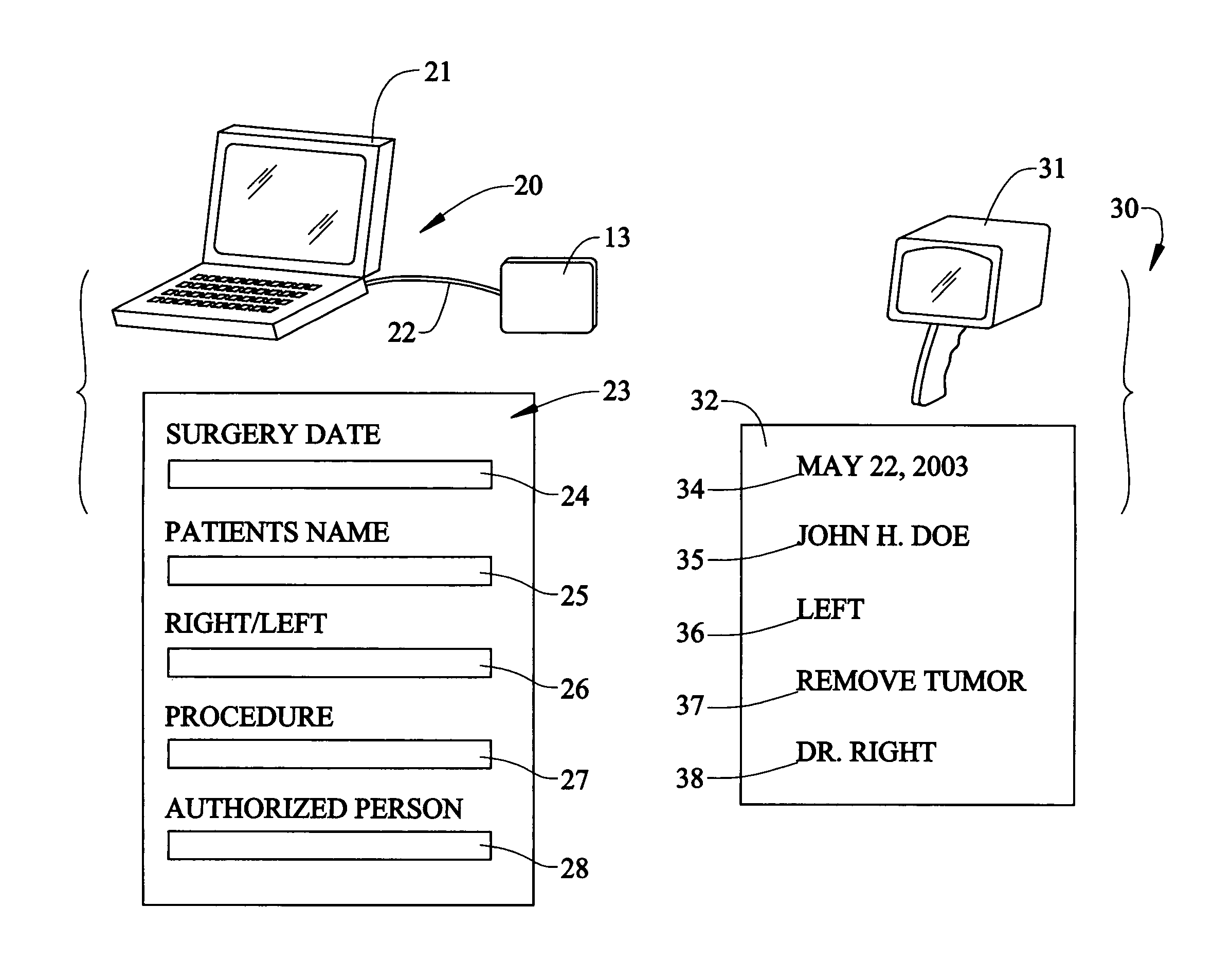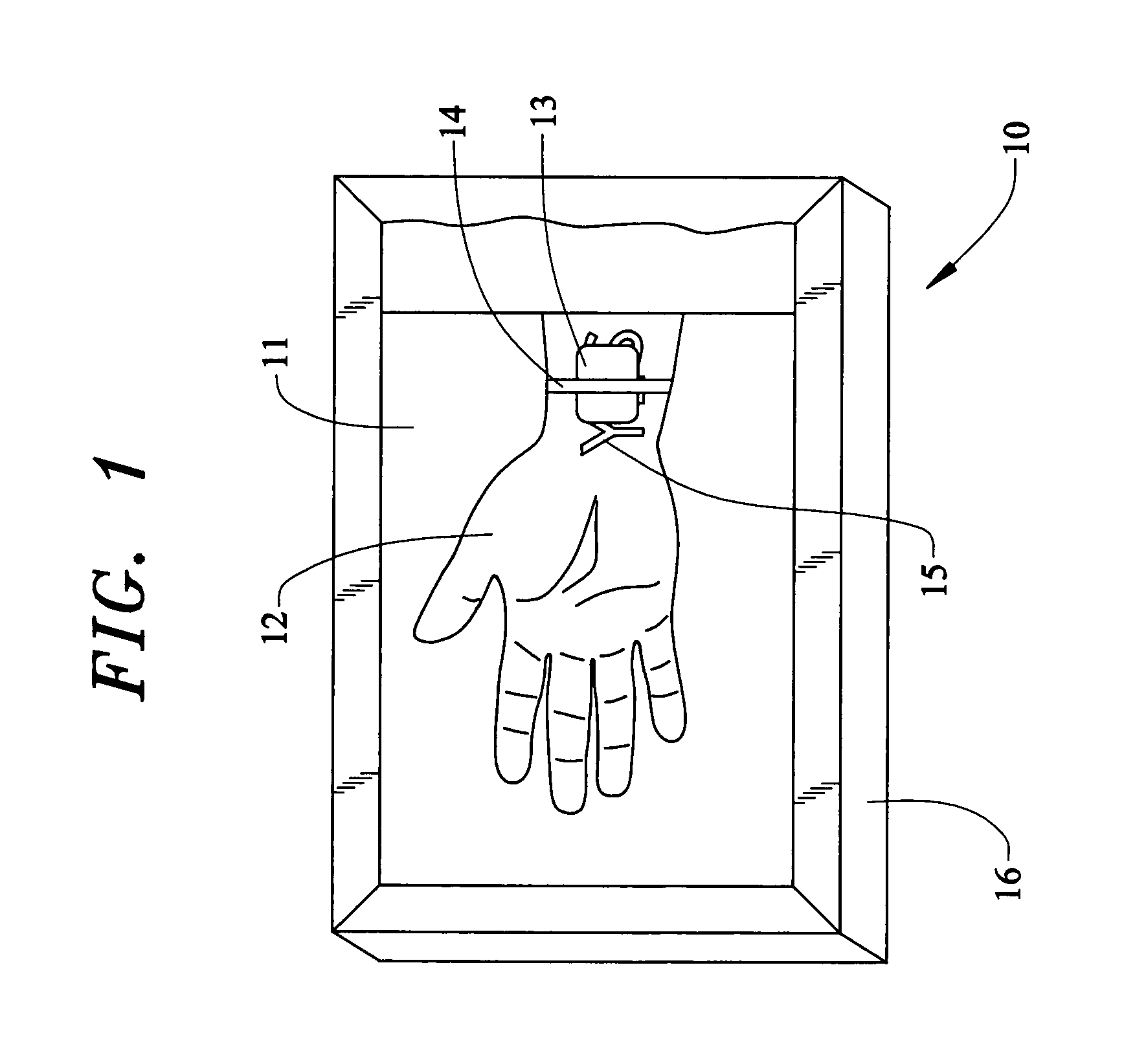Surgical safety procedure and apparatus
a surgical and safety technology, applied in the field of safety devices and procedures, can solve problems such as errors giving rise to these stories, disturbing the sterile surgical field, and amputation involved the wrong part of the right patien
- Summary
- Abstract
- Description
- Claims
- Application Information
AI Technical Summary
Problems solved by technology
Method used
Image
Examples
Embodiment Construction
[0021]The micro-chip of this invention is programmed to store specific information concerning a particular patient and a particular surgery. The computer chip is either attached to the patient or the patient's medical chart to accompany the patient during procedures conducted in the medical care facility. As shown in FIG. 1, the safety apparatus 10 is shown in the operating room. A patient's left hand 12 is shown on an operating table in the operative field 11 before final prepping. The surgical drapes 16 frame the operative field. The computer chip 13 is attached to the patient by most any means, such as adhesive tape 14, on the site of the intended surgical procedure. A “YES” marking 15 has also been applied to the patient's skin at the specific site of the intended surgery. The mark may be made by the patient or hospital personnel.
[0022]The safety procedure that incorporates the micro-chip begins with a decision by and between the doctor and the patient to follow a certain treatm...
PUM
 Login to View More
Login to View More Abstract
Description
Claims
Application Information
 Login to View More
Login to View More - R&D
- Intellectual Property
- Life Sciences
- Materials
- Tech Scout
- Unparalleled Data Quality
- Higher Quality Content
- 60% Fewer Hallucinations
Browse by: Latest US Patents, China's latest patents, Technical Efficacy Thesaurus, Application Domain, Technology Topic, Popular Technical Reports.
© 2025 PatSnap. All rights reserved.Legal|Privacy policy|Modern Slavery Act Transparency Statement|Sitemap|About US| Contact US: help@patsnap.com



